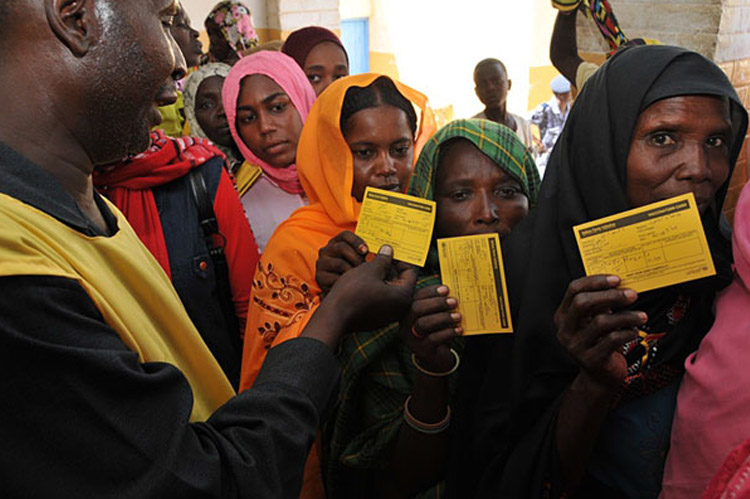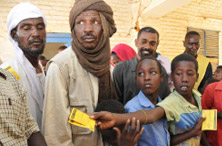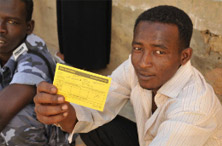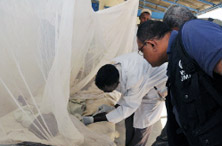 A group of people hold up their yellow fever vaccination cards in Darfur, Sudan (Photo: WHO Sudan)
A group of people hold up their yellow fever vaccination cards in Darfur, Sudan (Photo: WHO Sudan)
Yellow fever is an acute viral haemorrhagic disease transmitted by infected mosquitoes, mainly Aedes aegypti. The "yellow" in the name refers to the jaundice that affects some patients. Most of those infected experience mild symptoms including include fever, headache, jaundice, muscle pain, nausea, vomiting and fatigue. Between 15% and 20% go into a severe haemorrhagic phase and half of those patients die.
Globally, yellow fever causes around 200,000 cases and 30,000 deaths per year. Over 900 million people are at risk of being infected in the tropical areas of Africa and South America.
Sudan is the only country in Eastern Mediterranean Region in the yellow fever zone. Large epidemics has been reported in Sudan in 1940, 1959, 2003, 2005, 2012 and 2013. Sudan conducted a yellow fever risk assessment exercise in early 2013 and confirmed that the yellow fever virus was circulating in all parts of the country. Apart from Sudan, serological evidence of circulation of yellow fever virus has been documented in Djibouti and Somalia.
Recommendations to control yellow fever included conducting preventive campaigns with the yellow fever vaccine, of which a single dose provides lifelong protection. In addition, the vaccine should be introduced in countries’ routine child immunization programme. Saudi Arabia requires a valid yellow fever vaccination certificate from those travelling from endemic countries to perform umrah and hajj.
In 2017, over 50 partners launched the Eliminate Yellow fever Epidemics (EYE) Strategy: an unprecedented partnership supporting 40 at-risk countries in Africa and the Americas to protect at-risk populations, prevent international spread, and contain outbreaks rapidly. By 2026, it is expected that more than 1 billion people will be protected against the disease.
There is currently no specific treatment for yellow fever, although proper case management improves survival rate. Use of yellow fever vaccine which offers life-long immunity can protect one from yellow fever.





